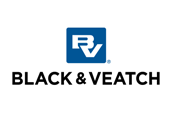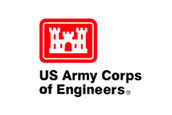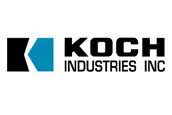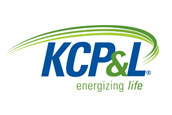
STORAGE TANK INSPECTION, ENGINEERING, AND MAINTENANCE SERVICES
Apex supports our clients with high-quality storage tank inspection, engineering, maintenance, access, and data management expertise, as preventing corrosion, cracking, and leaking in refinery storage tanks is crucial for plant productivity, safety, and compliance.
Refinery storage tanks are some of the most essential assets within a refinery, making proper storage tank care of the utmost importance.
Refinery storage tank failures can lead to massive costs and potentially-disastrous hazards. Leaking hazardous gases and liquids can create serious safety issues for personnel and the environment and potentially lead to more severe consequences if the leaks contain flammable materials.
Apex offers decades of experience in supporting the design, operational, and maintenance phases of refinery storage tanks, ensuring that your tanks remain in service and compliance.
Our storage tank protection solutions include:
- Engineering experts to optimize new and existing storage tank designs and ensure regulatory compliance.
- A robust suite of traditional and advanced non-destructive testing (NDT) inspection solutions to detect and locate leaks, corrosion, and other tank damages
- Maintenance and light mechanical service technicians for corrosion, insulation, and industrial cleaning services
- Storage tank-specific inspection data management software
- At-height and subsea access solutions, including rope access technicians, trained divers, and drones.
As a OneSource provider of asset protection solutions, Apex satisfies all your storage tank protection needs.
Storage Tank Non-Destructive Testing (NDT) Inspection Services
We use a wide range of advanced NDT techniques for aboveground and underground tanks and all of their individual components, including floors, welds, annular rings, roofs, shells, and more.
Apex inspects tanks throughout all phases of their operational lives, encompassing their construction, inspection, and maintenance. Our inspections help tank operators identify signs of damage, including corrosion, leakage, cracking, and wall thinning.
Our NDT tank inspection techniques and services include:
- Acoustic Emission (AE)
- 3D Laser Scanner
- 3D MFL (Magnetic Flux Leakage) Mapping with Top & Bottom Defect Discrimination
- Edge Settlement
- Guided Bulk Wave (GBW)
- Intrinsically Safe, In-Service UT Probes
- Large Structure Inspection (LSI™)
- Magnetic Flux Leakage (MFL)
- Pulsed Eddy Current (PEC)
- Tank Floor Inspections and Mapping
- Tank Shells/Roof Corrosion Surveys
- Tank Strapping
- Time-of-Flight Diffraction (TOFD)
- Ultrasonic Prove-Up
- Ultrasonic Testing (UT)
- Ultrasonic Thickness (UTT) Measurements
In-Service, Intrinsically Safe (IS) Storage Tank Inspections
Our customized, non-intrusive tank inspection services — which include using an intrinsically safe (IS) probe —maximize safety by allowing owners to determine the relative condition of their storage tanks without sending technicians into the asset.
Apex in-service, IS scanning service is a reliable, environmentally-conscious, and safe tank inspection method, primarily used for ultrasonic wall thickness measurements. These inspections allow tank owners to postpone a full out-of-service inspection until a more appropriate time, reducing costs, downtime, and lost profits.
Additional benefits of this tank scanning service include:
- Tanks stay in service.
- Personnel and environmental exposure to hazardous products are minimized.
- Accurate corrosion rate assessment
- Hazardous waste disposal costs are minimized or eliminated.
- Environmental and operational liabilities are significantly reduced.
Tank Bottom Condition Assessment
Apex uses a surveying tool designed to assess the tank bottom condition in aboveground storage tanks (ASTs).
Apex uses an in-service test that utilizes AE transducers mounted outside the tank wall to listen to the active corrosion inside the tank. Based on the test results and the resulting grade given to the tank, the owner/operator can decide whether or not it is necessary to open the tank for decontamination and internal inspection.
In addition to detecting active corrosion, Apex AE technology can detect and locate active leaks.
Apex helps tank operators optimize their maintenance budgets, as it has shown that tanks are often opened unnecessarily, leading to unnecessary downtime and lost productivity.
COATINGS
Tank Coating Services: Combining Durability and Efficiency for the Long Haul
At Apex, we specialize in advanced tank coating solutions that serve the unique needs of the oil and gas industry, among other sectors. With over 23 years of hands-on experience, we understand the intricacies of tank preservation and maintenance, which allows us to offer coatings that meet the highest standards of durability and efficiency.
Why Choose Our Tank Coating Services?
- Exceptional Durability: Our coatings are engineered to withstand extreme temperatures, corrosive chemicals, and heavy usage. This results in a longer tank lifespan and reduced maintenance costs.
- Safety First: We prioritize safety at every step. Our coatings are non-toxic and compliant with all federal and industry-specific regulations. This ensures not only the safety of your tanks but also that of your team and the environment.
- Custom Solutions: Understanding that each tank has its own set of requirements, we offer customized coating solutions tailored to your specific needs.
- Quality Assurance: We employ rigorous inspection protocols both during and after the application process, ensuring that the coating meets our stringent quality criteria.
- Industry-Leading Partnerships: We have worked with some of the biggest names in the oil and gas sector, including Kinder Morgan, Buckeye, Marathon, and many more, affirming our reputation for quality and reliability.
- Eco-Friendly Options: Sustainability is a key focus for us. Wherever possible, we employ environmentally friendly materials and practices without compromising on quality.
Our Coating Process
- Initial Assessment: Our team of experts will evaluate the condition of your tank to recommend the most suitable coating solution.
- Surface Preparation: Before applying any coatings, the tank surface is thoroughly cleaned and prepared to ensure optimal adherence.
- Coating Application: Utilizing advanced techniques and equipment, our trained technicians apply the coating in a controlled environment to ensure even coverage.
- Quality Inspection: Post-application, our team conducts a comprehensive inspection to verify the integrity of the coating.
- Final Report: A detailed report, including maintenance guidelines, is provided upon project completion.
For evidence of our expertise and dedication to quality, we invite you to explore the case studies detailing our work with past clients, including ongoing projects with well-established organizations.
To find out how our tank coating services can add value to your operation, please contact us for a consultation. We look forward to partnering with you for all your tank coating needs.
GALLERY
ROOF AND CHIME COATING

Roof and chime coating in storage tanks is critical to storage tank maintenance. The roof and chime are two of the most exposed areas of a storage tank, and they are therefore more susceptible to corrosion. If the roof and chime are not properly coated, corrosion can cause leaks and other problems that can damage the tank and its contents.

Our experienced team will apply coating that helps to seal the metal and protect it from the elements, including rain, snow, sunlight, and corrosive chemicals.
These are some benefits after our team finishes the roof and chime coating on the storage tanks:
- Prevents corrosion. A properly applied roof and chime coating system can help to prevent corrosion for many years. This can extend the life of the tank and save money on repairs and replacements.
- Protects the contents of the tank. Corrosion can contaminate the contents of a storage tank, making them unsafe for use. Roof and chime coating helps to protect the contents of the tank from contamination.
- Improves the appearance of the tank. A freshly coated roof and chime can make a storage tank look much better. This is especially important for tanks that are in visible locations.

Our qualified and professional team will continue maintenance follow-ups to protect the tank and its contents from corrosion and other problems.
Inspect the roof and chime regularly. Look for any signs of corrosion, cracking, or other damage.
Clean and coat the roof and chime. This will help to protect it from corrosion.
Repair or replace any damaged roof and chime components. It is important to address any problems early on to prevent them from becoming more serious.

Generate Results
![]()
Non-Destructive Testing Services
![]()
API 1631, 653, 510, and STI SP001 Certified Inspectors
![]()
Advanced Testing Techniques
Storage Tank Engineering Consulting Services
With expert engineers on staff covering a variety of engineering disciplines, our engineering services help to ensure that your tanks are properly designed, operating efficiently, and free of mechanical integrity concerns. Apex engineers can assist with developing inspection and maintenance guidelines and procedures for new tanks and evaluating new tank designs and existing atmospheric storage tank conditions for regulatory compliance, including API 620, API 650, and API 653.
Our complete list of AST engineering services is extensive, including but not limited to:
- Allowable Pressure Analysis
- API 620 Design/Corrosion Calculation
- Corrosion Evaluations
- Dike Slope and Volume Survey
- Finite Element Analysis (FEA)
- Fitness-For-Service (FFS) Evaluations
- Floating Roof Buoyancy Analysis
- Foundation Settlement Analysis
- Fracture Mechanics Analysis
- Frangible Roof Evaluations
- Hydro-Test Exemptions
- Metallurgical Evaluation
- Repair/Alteration Scope of Work
- Risk-Based Inspection (RBI) Evaluations
- Roof Hitch Analysis
- Shell & Roof Deflection Analysis
- Spill Prevention, Control, And Countermeasure (SPCC) Inspections
- Venting Analysis
- Verticality/Plumbness/Roundness Evaluation
- Wind and Seismic Analysis

Storage Tank Maintenance Services
Storage tank interiors and exteriors require periodic cleaning to maximize their operational lifetimes and prevent contamination of the product they store. Corrosion, mud, and grime buildup needs to be removed before it worsens, and old coatings that no longer protect tank exteriors may be doing more harm than good. Apex offers multi-disciplined technicians that conduct inspections and perform light mechanical services to repair the damages they find to get your assets back into service as quickly as possible.
Corrosion Removal and Mitigation Services
- Abrasive Blasting
- Baking Soda Blasting
- Cleaner/Greener Slurry Blast
- Coating Removal and Re-Application
- Fireproofing- Chartek Certified Applicator
- General Power Tooling
- Surface Preparation
Industrial Cleaning Services
- Flexible and Rigid Lancing
- Glycol Dehydration Cleaning (Manual and Chemical)
- Skid Vacuum Systems
- Storage Tank Cleaning and Degassing
Insulation Services
- Cladding
- Insulation Blankets
- Insulation w/ Metal Jacketing
- Spot Welding
At-Height and Subsea Storage Tank Access Services
Apex provides rope access, confined space, and unmanned system (drone) access solutions to inspect and repair the hard-to-reach components on your storage tanks. Our rope access techs safely access at-height and confined locations and can complete nearly any inspection and maintenance service that those on the ground can. Diving technicians perform multiple inspection techniques, including drilling, blasting, welding, and formwork maintenance services. Aerial drones can pre-plan inspection and maintenance plans for tank roofs and interiors by providing initial assessments. Unmanned aerial vehicles (UAVs) can capture high-resolution video/still images, conduct UT and VT NDT inspections, and perform 2D/3D mapping and surveying storage tank farms.
Storage Tank Inspection Data Management
Apex turns storage tanks into Think Tanks by combining tank-bottom condition assessment services with our industry-leading inspection data management software, PCMS®. Apex engineers feed real-time data into PCMS, which performs qualitative and quantitative risk-based inspection (RBI) calculations to prioritize high-risk assets, helping to optimize maintenance budgets. In addition to RBI calculations, PCMS recommends future inspection dates, identifies risk thresholds, and centralizes all other storage tank inspection and integrity data, including:
- Corrosion Monitoring Locations (CMLs)
- Thickness Monitoring Locations (TMLs)
- Corrosion Probe Readings
- Corrosion Coupons
Reporter
Reporter electronic reporting system used to generate on-site storage tank inspection reports. Offering a complete visual representation of tanks and potential damage areas, the system supports data for tank floors, shells, fixed and floating roofs, foundations, and all related tank components. Other Reporter capabilities include:
- Stores all general tank and inspection information
- Engineering calculations (API 653; T-min and Remaining Life, Hydrostatic Test Height, Visual and UT Inspection Intervals, Next Inspection Date, etc.)
- Data entry compatible with field worksheets
- Identification of Thickness Measurement Locations (HTML)
- Data representations in 2D/3D plots
- Summarized recommendations signals, including architects, engineers, project managers, and construction workers. We work together to ensure the success of each project we undertake.

The Importance of Tank Inspections
September 23, 2019, the Environmental Protection Agency (EPA) estimates that there are around 700,000 aboveground bulk storage tanks in the United States. While aboveground storage tanks are designed to withstand the elements, one fact remains: Left unchecked, tanks leak. Tank leaks can occur due to various factors – faulty equipment, corrosion, and UV degradation, to name a few. At Apex, we take tank leaks very seriously, as they can lead to environmental contamination and workplace injuries. We provide an all-inclusive approach to tank management, conducting regular inspections, offering repair guidelines, and completing onsite remediation for clients across the country.
The Importance of Tank Inspections
Why Tank Inspections Matter
A tank leak can lead to several serious issues. A leaking tank may lead to aesthetic complaints, costly repairs, or tank failure. A tank leak can cause severe environmental contamination and workplace injuries. Regular tank inspections are essential to identifying and addressing potentially catastrophic tank issues. You may think you’ll be able to spot a leaking tank on your own, but it’s not always that easy. Many tank leaks go unnoticed, leaking product into the surrounding groundwater for years before the problem is addressed. Of course, failing to undergo tank inspections can also lead to hefty fines from the EPA – fines that may occasionally reach millions of dollars.
What Does a Tank Inspection Entail?
First, we’ll identify what kind of tank inspection you need based on the contents of your storage tank. We offer a wide variety of services during our comprehensive tank inspections:
- Roof inspection, including dome and seals
- Shell inspection
- Tank floor
- Aperture
- Coating and liner
- Evaluation of settlement
- Strapping and calibration
- Nozzle inspection
Our expert tank inspectors will begin by inspecting your tank’s exterior to identify any cracks or crazing. If cracks are found, our inspector will assess the depth and severity of the crack, conducting further testing from there. Our inspectors will also look for any corrosion that may be eating away at the walls of your tank. Finally, our inspectors will assess the tank containment area to ensure no environmental hazards. If tank issues are found, it’s not the end of the world. Our inspectors will assess the damage, then write up recommendations to help you reach compliance. Our remediation team can help address any leaks within 24 hours of your inspection.
Schedule a Tank Inspection
Have you fallen behind on your tank inspections? Don’t put your personnel at risk. We’ve recently expanded our tank inspection service line to comply with a variety of governing bodies:
- Tanks: Steel Tank Institute (STI) SP001, American Petroleum Institute (API)-653, and the National Fire Protection Association (NFPA) and American Water Works Association (AWWA)
- Pressure Vessels: American Petroleum Institute (API)-510
- Piping: American Petroleum Institute (API)-570
If you are ready to schedule your tank inspection, contact us.
_____
With Apex, you never have to worry about frustrating delays or the scheduling of multiple inspections. We employ expert tank inspectors who offer the technology and knowledge to conduct tank inspections anytime, anywhere in the continental United States and beyond. We’re also well-versed in EPA and OSHA guidelines, so we can help you develop a plan for ongoing compliance.
At Apex, our experts can prepare custom tank inspections and remediation recommendations for each client. We’re passionate about keeping you and your employees safe and compliant. If you have questions about the importance of tank inspections, Apex is here to help.

Full-,Service Storage Tank Testing
Apex provides full-service underground storage tank (UST) and aboveground storage tank (AST) inspection services in the Austin area, including AST integrity testing and in-service inspections. Our personnel has extensive experience, specialty training, and state-of-the-art equipment for inspecting any typ
Full-,Service Storage Tank Testing
Apex provides full-service underground storage tank (UST) and aboveground storage tank (AST) inspection services in the Austin area, including AST integrity testing and in-service inspections. Our personnel has extensive experience, specialty training, and state-of-the-art equipment for inspecting any type of tank including fuel, oil, asphalt, water and chemical tanks.
Services and Capabilities
![]()
ASME, AWS, and API NDE Inspections
![]()
Vacuum Box Examination (VB)
![]()
Magnetic Flux Leakage (MFL/MFE)
![]()
Ultrasonic Thickness Testing (UTT)
![]()
Visual Testing (VT)
![]()
Shell Plate UT, Head UT, and Through Coating UT
![]()
Magnetic Particle Testing (MT)
![]()
Penetrant Testing (PT)
![]()
Phased Array Ultrasonic Testing (PAUT)
![]()
Dry Film Coating Inspection
![]()
Ultrasonic Shear Wave Testing (UTSW)
![]()
Radiography (X-Ray and Gamma Ray)

Additional Clients
Clients we've done projects for over the years.

Certified to do the job right
Our personnel has certifications from both the American Petroleum Institute and Steel Tank Institute in the inspection and operation of these tanks, including:
- API 653 Aboveground Storage Tank Inspection Certification
- API 1631 Underground Storage Tank Inspection Certification
- API 510 Pressure Vessel Inspection Ce
Certified to do the job right
Our personnel has certifications from both the American Petroleum Institute and Steel Tank Institute in the inspection and operation of these tanks, including:
- API 653 Aboveground Storage Tank Inspection Certification
- API 1631 Underground Storage Tank Inspection Certification
- API 510 Pressure Vessel Inspection Certification
- API 570 Piping Inspection Certification
- Steel Tank Institute (STI) SP001 Tank Inspection Certifications
This combination of expertise and nationally recognized certifications allow us to provide services for all types of projects, from a single fuel station tank to field-built erected tank farms.
You can trust Apex for professional tank testing and environmental services.

What are the Above Ground Storage Tank Inspection Requirements in the Manufacturer's Shop and in the field?
The construction code for the atmospheric storage tank is API STD 650, and for a low-pressure storage tank is API STD 620. These cover the minimum requirements for design, materials, fabrication, inspection, and testing. With the ab
What are the Above Ground Storage Tank Inspection Requirements in the Manufacturer's Shop and in the field?
The construction code for the atmospheric storage tank is API STD 650, and for a low-pressure storage tank is API STD 620. These cover the minimum requirements for design, materials, fabrication, inspection, and testing. With the above explanation, your inspection and test plan (ITP) for storage tank construction needs to meet the requirements of either API STD 650 or API 620. The storage tank inspection and test plan summarize all inspection requirements on several pages and in tabular format. The storage tank inspection and test plan are prepared in two sections, one for the supply, cutting, rolling, and beveling of storage tank plates in the manufacturer's shop, and the other section for construction activities in the field. The prepared plates in the shop are transferred to the field for assembly. Depending on the client's contract, sometimes there is only one contractor for shop and field activities, and sometimes there are two contractors one for the shop and one for field assembly. This table determines each party's responsibility (i.e. construction contractor, third-party inspector, and client). For more detailed information on above-ground storage tank inspection both in-shop and on-site review the following articles: Third Party Inspection for Storage Tank Inspection and Test Plan for Storage Tank
What are Important Points in the Above Ground Storage Tank Inspection in a Shutdown?
For detailed information, you need to refer to API STD 653 and API RP 575.
Internal Inspection-Shell Plate
- Shell plate inspection for corrosion and deformation
- Shell plate circumferential and longitudinal welding joints inspection for corrosion and cracking
- Internal coating inspection (if any)
Internal Inspection- Bottom Plate
- Thickness measurement and remaining life calculation on bottom plates and annular plates
- Bottom plates and annular plates inspection for corrosion and deformation
- Bottom plates and annular plates welding joints inspection for corrosion and cracking specifically the annular plate joints with first shell course plate
- Sump inspection
- Internal coating inspection (if any)
- Inspection of the sample plate, which must be cut to find any external corrosion
- Vacuum testing inspection and supervision

Above-Ground Storage Tank Inspection
The Above Ground Storage Tank Inspection provides you with information about the inspection of storage tanks and storage tank testing in a construction shop and site, as well as storage tank in-service inspection in operating units. You may review the storage tank inspection procedure and storage tank I
Above-Ground Storage Tank Inspection
The Above Ground Storage Tank Inspection provides you with information about the inspection of storage tanks and storage tank testing in a construction shop and site, as well as storage tank in-service inspection in operating units. You may review the storage tank inspection procedure and storage tank ITP articles.
What is the Application of a Storage Tank?
There are two kinds of storage tanks, the Atmospheric Storage Tank and the Low-Pressure Storage tank.
The maximum pressure for the vapor or gas space of an atmospheric storage tank is 2.5 psi, and for a low-pressure storage tank is 15 psi.
If the pressure is more than 15 psi, the liquid cannot be stored in the storage tank and it is necessary to be stored in a pressure vessel.
Atmospheric storage tanks are used for storing crude oil, heavy oil, gas oils, furnace oils, naphtha, gasoline, non-volatile chemicals, etc.
Low-pressure storage tanks are used for storing light crude oil, some gasoline blending stock, light naphtha, pentane, some volatile chemicals, liquid oxygen, liquid nitrogen, etc.
The physical shape of both kinds of above-stated storage tanks might be similar, but the construction code, design, and inspection requirements are different.
Internal Inspection-Fix Roof
- Roof plate inspection for corrosion and deformation
- Roof structure members inspection for corrosion and deformation
- Roof plates and structure members welding joints inspection for corrosion and cracking
- Internal coating inspection (if any)
Internal Inspection-Floating Roof
- Roof plate inspection for corrosion and deformaton
- Roof structure members inspection for corrosion and deformation
- Roof plates and structure members welding joints inspection for corrosion and cracking
- Roof sealing system inspection i.e. rubber seal, seal plate, etc.
- Roof leg support inspection
- Pontoon gasoil leak testing
- Internal coating inspection (if any)
- Roof drain system inspection
Internal Inspection-Internal Equipment
- Gage pole inspection for corrosion and deformation
- Support and structure members inspection for corrosion and deformation
- Inspection of columns for corrosion and deformation
- Fixed coil inspection and test for corrosion
External Inspection-Shell and Roof
- Thickness measurement and remaining life calculation
- Shell and roof plates inspection for corrosion and deformation
- Shell and roof plates circumferential and longitudinal welding joints inspection for corrosion and cracking.
- Nozzles, manways, and flange welding joints inspection for corrosion and cracking

What are the Above Ground Storage Tank Inspection Requirements in Operating Plants?
The In-Service Inspection code for your atmospheric storage tank is API STD 653. The content in this standard covers tank inspection, repair, alteration, and reconstruction. It is necessary for you to use this standard with the API Recommended Practice 575,
What are the Above Ground Storage Tank Inspection Requirements in Operating Plants?
The In-Service Inspection code for your atmospheric storage tank is API STD 653. The content in this standard covers tank inspection, repair, alteration, and reconstruction. It is necessary for you to use this standard with the API Recommended Practice 575, which is titled “Guidelines and Methods for Inspection of Existing Atmospheric and Low-pressure Storage Tanks. ”As you see above, the API STD 653 addresses only the atmospheric storage tank, but API RP 575 covers both atmospheric and low-pressure storage tanks. The API STD 653 is designated for atmospheric above-ground storage tank inspection, for a tank built based on API 650, but you may use this code for any steel tank with specific consideration and operating details. Some other recommendation practices that you need to take into account in your above-ground storage tank inspection are API RP 651 for the tank bottom plates cathodic protection system, API RP 652 for the tank internal lining system, API RP 571 for damage mechanism, and API 577 for welding inspection and metallurgy. Many of the design, welding, examination, and material requirements of API 650 can be applied in the maintenance inspection, rating, repair, and alteration of in-service tanks. But if you found a conflict between the construction code API 650 and API 653, the requirement of API 653 must govern this standard, as it -specifically addresses above-ground storage tank inspections for operating plants. API 653 above-ground storage tank inspectors are qualified for the inspection of storage tanks, as they are certified by API for such activities.
- External part of annular plates inspection, specifically welding joint with shell plates
- Side vents inspection
- Gasket seating surface inspection of nozzles and manways flange joints
- Top angle, wind girder, and stairway inspection for corrosion and deformation
- Roof sump inspection (floating roof only)
- Pontoon and pontoon structure welding joints inspection for corrosion and cracking (floating roof only)
- Weather shield rubber and pontoon doors rubber inspection (floating roof only)
- Pontoon air leak testing (internal floating roof only)
- Painting or insulation inspection
External Inspection-Foundation
- Concrete foundation inspection for corrosion and cracking
- Earthling system inspection
- Asphalt inspection (around shell)
- Cathodic protection system inspection
Apex Multifamily Builders
3001 S Lamar Blvd, Suite 300, Austin, TX 78704
Office: 737-209-0077 | Sales@apex-multifamily.com
Copyright © 2016 Apex Multifamily Builders LLC - All Rights Reserved.
Privacy Policy
As of September 30, 2021, our company's privacy policy states that it collects certain personal information from visitors and users of the website, which may include your name, email address, phone number, and other information you voluntarily provide. The company may use this information to communicate with you about its products and services, respond to inquiries you make through the website, and improve its website and services. Our privacy policy also states that it is committed to protecting the privacy and security of this information, and will not sell or share it with third parties except as necessary to provide their services or as required by law.










